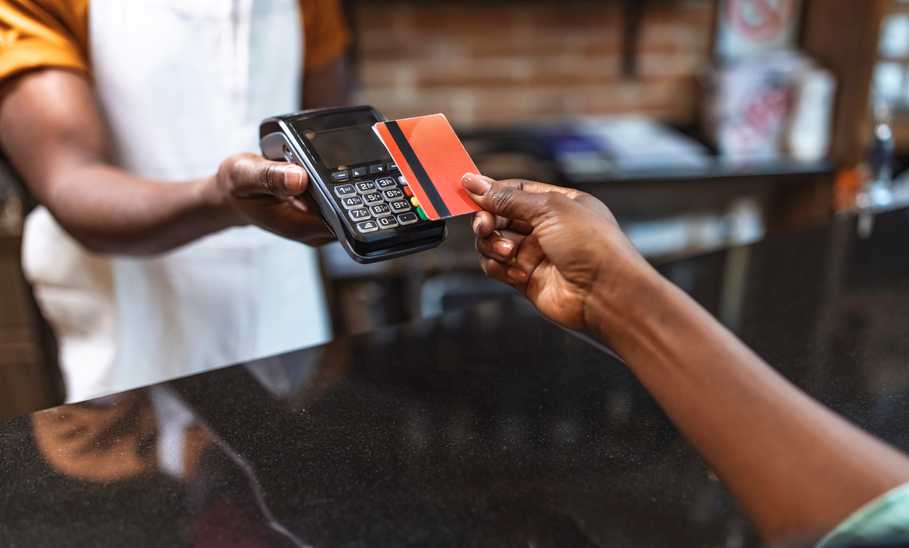Debt Management Guide: Good Debt vs. Bad Debt

Our evaluations and opinions are not influenced by our advertising relationships, but we may earn a commission from our partners’ links. This content is created by TIME Stamped, under TIME’s direction and produced in accordance with TIME’s editorial guidelines and overseen by TIME’s editorial staff. Learn more about it.
Isn’t all debt bad? If money was no object, wouldn’t it be best to pay cash for everything?
The answer is no. If used properly, debt has a place in your credit profile. It can improve your credit score, which can help you secure an apartment, insurance, and sometimes a job. However, there is such as a thing as “good” and “bad” debt.
Good debt can be helpful, though you don’t want to have it forever. That said, you never want to engage in bad debt. Let’s discuss the differences.
| Good debt | Bad debt |
|---|---|
Improves your net worth | Detracts from your net worth |
Potentially enhances your credit score | Potentially hurts your credit score |
Facilitates your financial success | Adds an unnecessary monthly bill |
Low interest rates | High interest rates |
Good debt generally refers to borrowing money at a reasonable interest rate to pay for something that will ultimately make you wealthier. However, regardless of its purpose, you must ensure you can afford the payments.
While the topic is often debated, many consider loans taken out to finance a home purchase, a business, or education, to be examples of good debt. Here’s a closer look at each.
A mortgage used to purchase a principal residence or an investment property is often considered good debt. As you pay down the balance owing you build home equity. Also, the property you purchase is an asset that should increase in value over time. In the case of a rental property, you have the potential to generate monthly rental income.
Of course, not every home purchase can be considered a good investment. If the mortgage payments and related costs are more than you can afford, it could hamper your ability to build wealth. This would no longer be considered good debt.
When launching a business, you may experience significant start-up costs. It might be considered good debt if you borrow wisely to cover some of these expenses. This is because a successful business can allow you to generate income over the long term. In other words, taking out a loan to further your professional career can be a net positive.
Student loans can also be considered good debt. In theory, an investment in your education should make it easier to find a good-paying job, though this isn’t always true. However, by furthering your education, you are investing in yourself in multiple ways, which is a positive thing.
Bad debt detracts from your wealth, especially if it creates monthly financial strain and reduces your discretionary income. If you have bad debt, you’re probably well aware of it.
A common form of bad debt is revolving credit card balances. You should never use credit cards if you cannot afford to pay off the balance in full by the statement due date. A personal loan can also be considered bad debt, depending on its purpose and the costs involved. Instead of borrowing to purchase that shiny new toy or pricey vacation, wait until you’ve saved the money you need. Don’t go into debt for anything that isn’t a necessity.
Credit cards are notorious for high interest rates. The average U.S. credit card APR in 2023 was 22.8%, and rates of 30% or higher are not uncommon.
Of course, if you pay your balance in full each month, your APR is irrelevant. Only those in the habit of paying less than their total bill, especially those making just the minimum monthly payment, need to worry about interest charges, which can spiral quickly.
A car is likely a necessity unless you live in a big city close to a good transit system. While it can be considered reasonable to take out a modest loan for a vehicle, too many people take out huge auto loans to finance expensive cars, trucks, and SUVs. Often, these loans are financed over seven or eight years, resulting in enormous interest charges over the life of the loan.
Remember that vehicles are depreciating assets. So, unlike a house purchase, you’re borrowing money for something that will eventually be worthless. In other words, your debt isn’t building your wealth. Additionally, some auto loans come with high interest rates, which only compounds the issue.
Interest rates on personal loans typically aren’t as high as credit cards, but they can still be significant. The average rate for a 24-month personal loan as of February 2024 was 12.49%, according to the U.S. Federal Reserve. For most situations you should avoid them if at all possible.
That said, a debt consolidation loan is one example of a personal loan that can help you escape bad debt. You can take several high-interest debts and pay them off with a single loan that has a lower interest rate. You could end up with a monthly payment on the new loan that is smaller than the sum total of your former monthly payments. You may also be able to pay off your debt faster. Here is our recommended list of lenders to consolidate debt for your to consider.
Spending more than you can afford is common. In a world where credit cards are the most popular method of payment in the U.S. (41% of point-of-sale purchases in 2023), you must be diligent about what you buy. If you’re not, minor, harmless transactions can soon add up to hundreds of dollars in spending beyond your budget. Swiping a credit card isn’t nearly as painful as forking over physical cash at the point of sale.
When unexpected car repairs, medical bills, or other emergencies arise, those without savings often turn to personal loans or credit cards as a last resort. This sudden debt doesn’t necessarily come from spending beyond your means; rather, it comes from failing to spend below your means, which would allow you to put money into an emergency fund. It’s wise to have at least three to six months of expenses put aside to cover unexpected financial events.
You may have thought that cryptocurrency purchase was a good investment. However, if you borrowed money to invest because you didn’t have the disposable income to swing it, and then the cryptocurrency tanked, you could quickly find yourself in debt with nothing to show for it. When it comes to investing, you should never stake more than you’re willing to lose.
If you’ve got a lot of high-APR debt, a good chunk of your income will be flushed down the toilet in the form of interest payments each month. This can make it harder to pay current bills. Generally, high interest rates will pull you deeper into debt.
Bad debt can take a toll on your credit score. Personal loans and credit card debt will affect your credit utilization rate (how much you owe in total), as it makes up 30% of your overall credit score.
Some experts recommend keeping your credit utilization rate below 30% to prevent it from adversely affecting your credit score. For example, if you’ve got a total credit limit of $20,000 across your credit cards, you should strive to keep your balances at or below $6,000.
You will feel stress if you’ve got a bad credit score and are struggling to pay your bills. This can affect your health, exacerbating your money problems in many ways, from medical bills to inhibiting your ability to perform well on the job.
It’s certainly possible to have good and bad debt simultaneously. In fact, it’s quite common. Just because you’ve got a mortgage and own a business doesn’t mean that you don’t have ugly credit card balances. However, one doesn’t cancel the other out.
Having good debt doesn’t give you a license to accrue bad debt. Stay vigilant, or you could quickly find yourself under unnecessary pressure.
When you walk around the grocery store, are you easily persuaded to throw items in your cart that aren’t on your shopping list? If so, credit cards may not be for you. Preventing bad debt can be as simple as sticking to a budget. If you can’t manage that, you’re better off using cash.
It’s easy to get caught up in looking for bargains. You may find yourself spending money you wouldn’t normally spend so that you can take advantage of a deal or discount. This can lead to bad debt. You may have saved several hundred dollars on the purchase while spending more.
Just because a financed purchase is categorized as good debt doesn’t mean it’s good for you. A fire sale mortgage that’s out of your price range is still a bad deal. Always stay within your budget.
Good debt comes with a low APR and is for items that can build your net worth, such as real estate or a small business loan. Good debt can even improve your credit score. Bad debt, on the other hand, carries higher APRs and doesn’t help you build for success. It reduces your discretionary income and overall wealth. The former will not cancel out the latter. Avoid bad debt at all costs.
A reasonable amount of debt is one that your income can easily afford. It’s wise to leave yourself with plenty of wiggle room to tuck money away for emergencies. You never know when your job or health situation might worsen.
Any debt that you can’t afford is bad debt. Debt that is generally considered good—such as a mortgage—can be bad debt if the monthly payments are out of your price range.
To determine if a debt is good or bad, assess whether you can afford the required payments, including the interest that will be charged. Anything with a high APR is bad debt.
The information presented here is created by TIME Stamped and overseen by TIME editorial staff. To learn more, see our About Us page.



